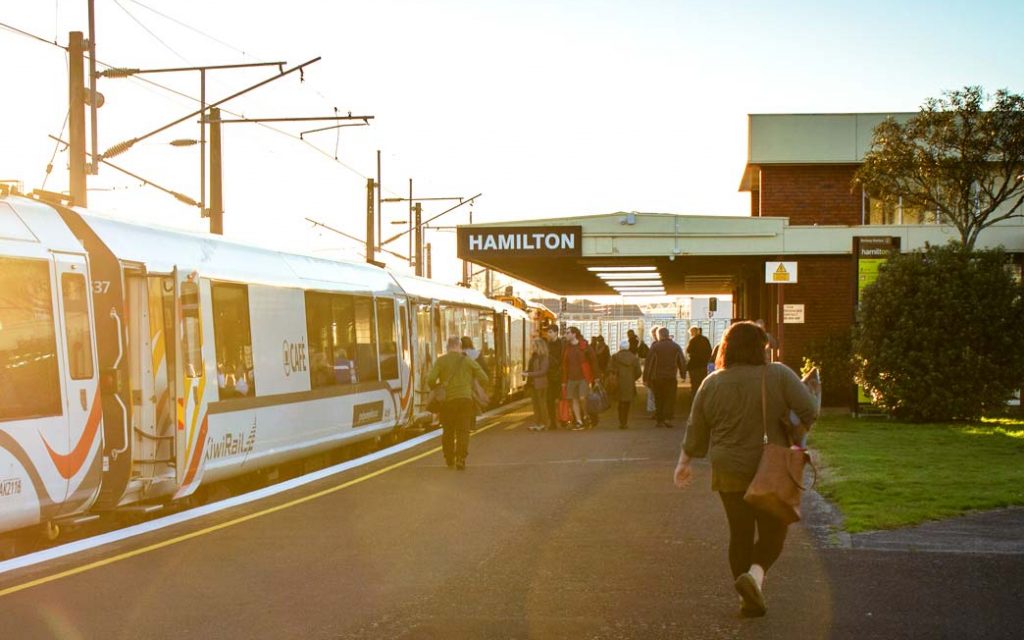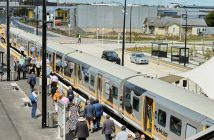No one is asking for a Japanese bullet train, but their standard 160km/h services on the other hand already run on the same narrow gauge as New Zealand – it wouldn’t be hard or expensive to do here, transport commentator Ben Ross says

The idea of hourly inter-city passenger train services between Auckland to Hamilton, and every two hours out to Tauranga, is not so farfetched.
Starting with Auckland to Hamilton, whether it is done as a full public venture or as a Public-Private Partnership, there are capital expenditure costs to bring the infrastructure up to scratch, allowing for 120km/h services (the L1 Line Speed currently allowed for passenger services).
The total for just Auckland to Hamilton, with trains running both ways every hour, would be $1.243 billion – or the price of just one of the 13 Roads of National Significance, the four-lane highways the current National-led government wish to build.
The $1.243 billion broken down looks like:
- $103 million to bring Tuakau, Pokeno, Te Kawahata, Huntly, Ngāruawāhia and Hamilton Stations up to scratch, including necessary interchanges with other modes, and interfaces with wider urban areas.
- $30 million for the duplication of the rail bridge at Ngāruawāhia, including two level crossing upgrades
- $10 million for a Third Platform at Puhinui Station on the Third Main
- $500m for rolling stock. This would consist of a diesel/electric hybrid that can run both on the wires at Auckland (and eventually Hamilton) and off the wires to Tauranga. Passenger capacity is 500 with 400 in Commuter Class, and 100 in Premier Class. Also, luggage and bike compartments needed.
- $300m for depot in the Waikato and the HQ
- $300m for duplication of the single track out the back of Meremere (which also includes foundational work for electrification in that stretch)
For an extra $600 million we get full electrification to Hamilton.
The extra amount to allow services to Tauranga would be:
- $1 billion for a duplicate Kaimai Tunnel (should be borne by the Public Purse although a private operator for passenger services can pay towards it through track access fees as part of their concession)
- $100m to bring the existing tunnel up to scratch effectively allow dual main operations with both tunnels
- $500m to bring the East Coast Main Trunk Line up to speed to support the trains including more passing loops (add another $500m for full duplication – a cost that should be borne by KiwiRail given it benefits freight)
- $100m for new stations including Morrinsville, Tauranga and Mount Maunganui
- $50m for stabling depot at Mt Maunganui
- $100m for additional rolling stock (and allowance for extra services in peak-on-peak conditions)
So the total costs for Tauranga services (not including full duplication) would be $1.85 billion. All up, a regular 120km/h Auckland-Hamilton-Tauranga passenger train service would cost $3.693 billion, or the price of around 2.5 Roads of National Significance.
One thing to note with the costs is that some of the benefits spill over into freight as well by allowing more and faster freight trains on those two respective lines. So any track or tunnel upgrades need to bear this in mind as well, especially if a PPP for passenger is to be considered.
Enter Japan
$3.7 billion for passenger services and better freight services on a 100-year asset timeframe is extraordinarily good value for money compared to four-lane highways of the same value, but with 50-year asset timeframes. That is not even including emissions, congestion, and the efficiencies of rail over roads for long distance passenger and freight movements (reductions of deaths and serious injuries on the road, productivity boosts, energy efficiency of steel wheels on steel tracks compared to rubber wheels on oil-based asphalt). I have not included tourism benefits either, nor benefits to land around the stations for subsequent Transit-Oriented Developments either.
But New Zealand is not very great at these sorts of large projects in terms of planning, procurement, construction nor operations. Look at IREX (the ferries), the Waikato Expressway and Transmission Gully repairs, and other large civic projects.
So why not bring in the world masters of transit especially rail transit, Japan?
Japan are world renowned for their rail systems (most are privately owned), their reliability, punctuality, and their rather large transit-oriented developments in, around, above and below their stations as well. We should bring in the masters for Auckland-Hamilton-Tauranga inter-city services due to high population growth allowing guaranteed patronage if you provide a decent enough rail offering.
In bringing in Japan for these Inter-City Services we will need to recognise these three things for them to even consider wanting to invest into inter-city services in the upper North Island:
- Public Private Partnership and who bears what upfront costs especially with track upgrades also benefiting KiwiRail’s freight services
- Japan likely to design, build, own and run these services on a multi-decade concession before the assets either return to public control or Japan continues on with them
- How to handle any Transit Oriented Developments (TOD) with both the stations and around the stations given it is the TODs that make the bulk of income and asset base for Japanese rail schemes. Do not get me wrong, some Japan-styled TODs would be most welcome into New Zealand, but if we are having Japan operate on a concession for the trains, how the TODs are handled especially when the concession runs out need to be factored in.
Once these three points along with the upfront costs are considered, I see no reason why someone like Japan Rail on a 35 year concession operate an Auckland to Hamilton service, and Auckland to Tauranga service. For the most part the OPEX and the majority of the CAPEX is kept off the Government’s books although arrangements for Tauranga service upgrades, and how we handle the benefits to the freight network.








